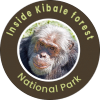There are quite a number of key animal species in Kibale National Park. These range from primates to giant forest mammals. Kibale National Park is also home to more than 350 bird species, so, visitors to this pristine forested area have found it fascinating and always desire to come back.
Black and White Colobus Monkey
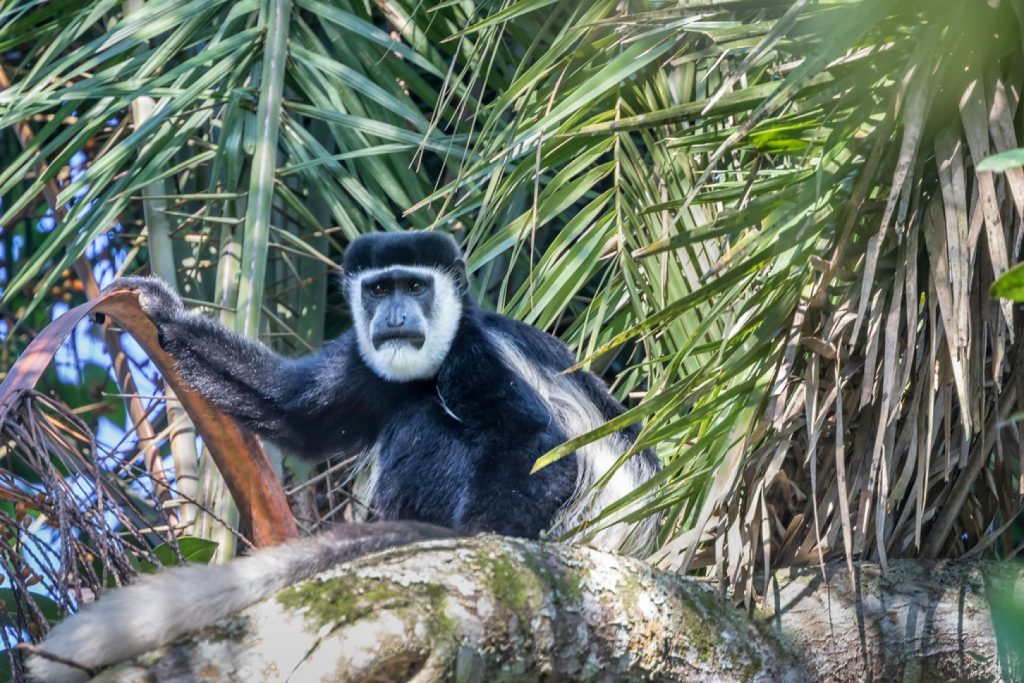
They are known to be colobus monkeys due to the fact that they do miss the thumb finger. Your visit to Kibale will give you a chance to glance at black and white colobus monkeys which can be sighted near the briefing area feeding on leaves, flowers, and twig as their major source of food. Colobus monkeys live in territorial groups of about nine individuals, based upon a single male with a number of females and their offspring. Newborn colobuses are completely white.
Red Tailed Monkey
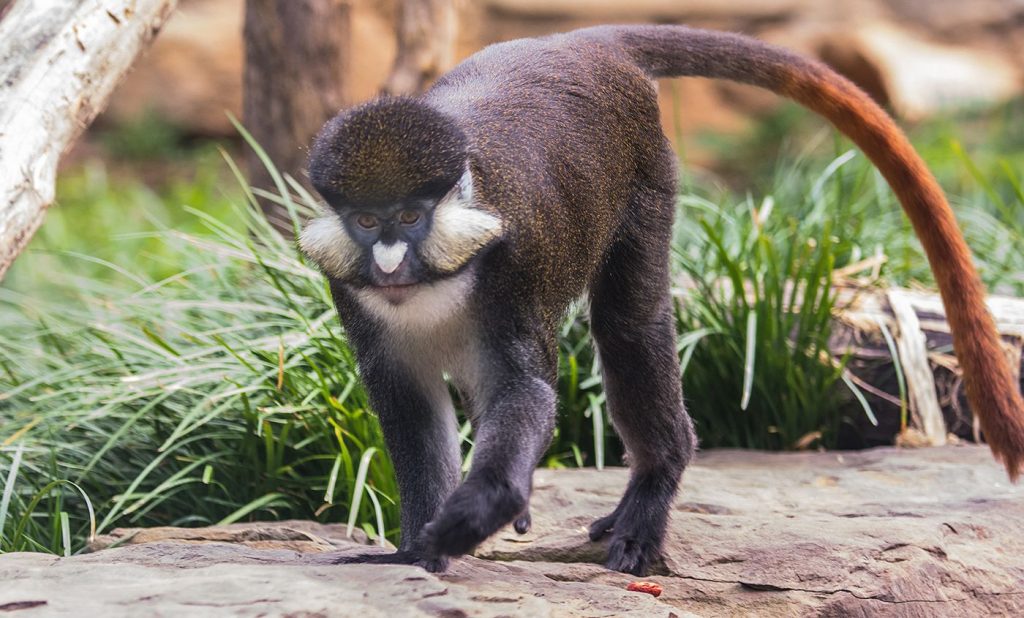
The red-tailed monkey, also known as the black-cheeked white-nosed monkey, red-tailed guenon, Redtail monkey, or Schmidt’s guenon is one of the key primate species in Kibale, that you may come into contact with as you head for your nature walk.
Red-tailed monkeys are social primates that form groups that can range in size from 7 to 30 individuals. They normally feed on small insects, fruits, leaves and twig as their major source of food.
They are very shy but friendly monkeys and can be sighted near the Kanyanchu Tourist center since its their common feeding area. These monkeys are mostly active during morning hours.
The red-tailed monkey is usually black, red, or orange. So, they are within the Parvorder Catarrhini family and have nostrils that point downward which differs from the Platyrrhini, with nostrils that point to the sides.
There are other features and characteristics to this mammal such as the white nose and cheeks in the midst of black or dark grey body fur. Red-tailed monkeys also have very large, elastic cheeks which are used in gathering food and storing it in their mouths for safety.
Mangabeys
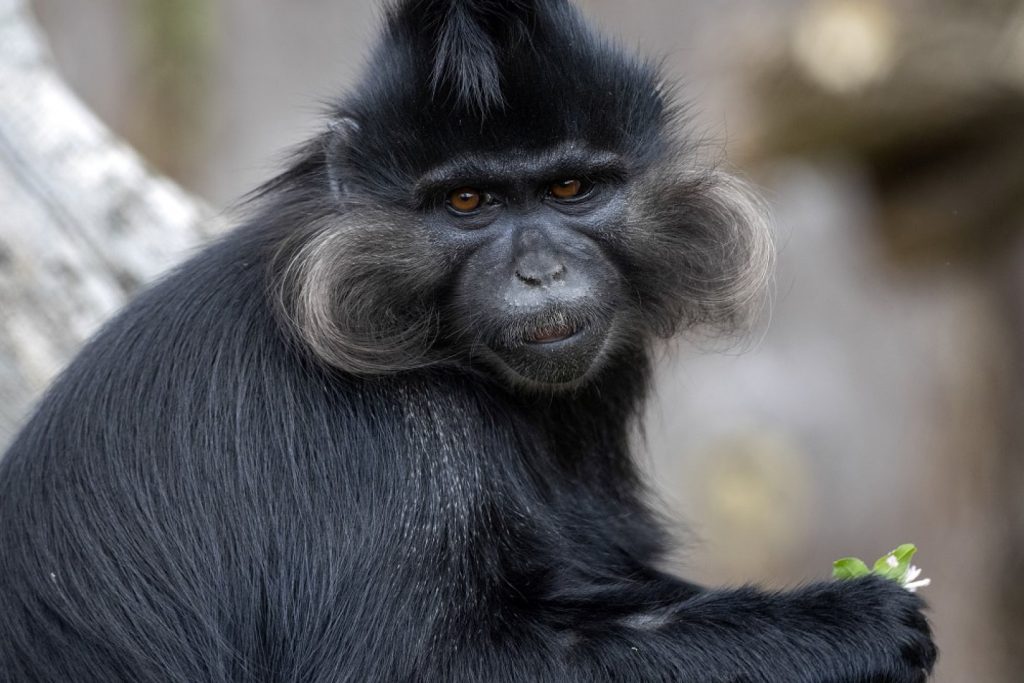
The black-crested mangabey, also known as the white-cheeked mangabey, and grey-cheeked mangabeys are some of the 13 primates that you may not miss to see while at Kibale Forest National Park. The grey-cheeked mangabey is a dark monkey, looking in shape overall like a small, hairy baboon. Its thick brown fur is almost black in its forest home, with a slightly rufus/golden mane around the neck.
The sexes are similar, with the males slightly larger than the females and always in group of 5-30 individuals. It feeds primarily on fruit, particularly figs, taking other fruits seasonally, as well as shoots, flowers and insects.
Red Colobus Monkey.
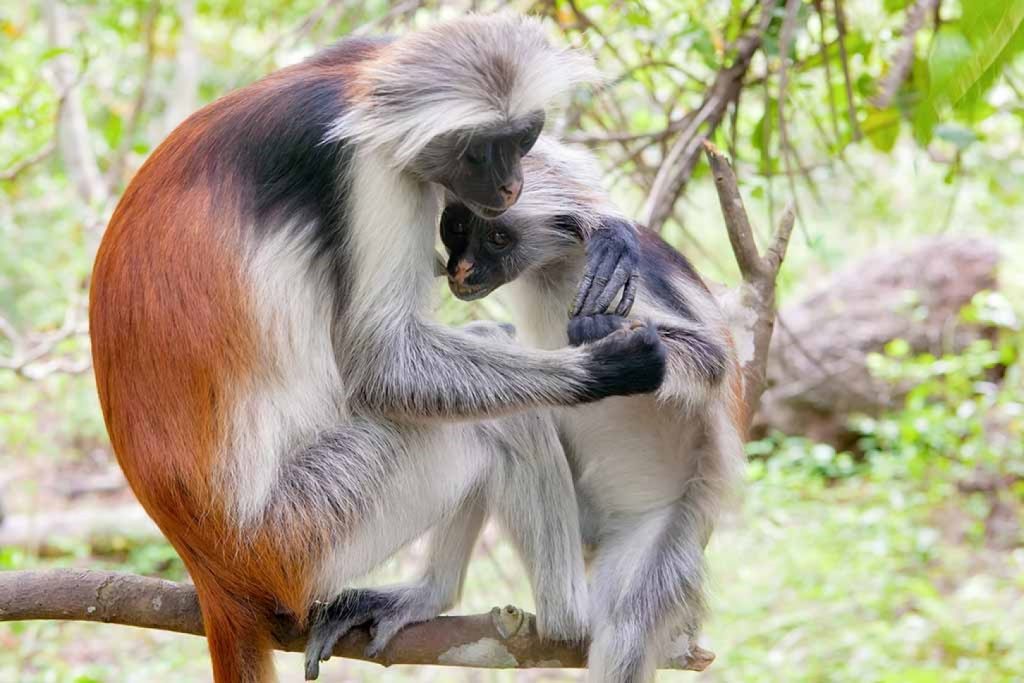
The red colobus monkeys are one of the colobus monkeys that you can see will in Kibale or Bigodi swamp. They are very social monkeys and can leave in a large group up to 80 individuals but average always ranging as 20 to 40 members. The groups often establish a dominance hierarchy determined by aggressive behavior. They normally feed on leaves, flowers and unripe fruits.
Red colobus monkeys have overlapping ranges with other troops. Interactions between troops can be either tense, though passive, or violent, with one troop trying to supplant the other.
L’Hoest’s Monkey
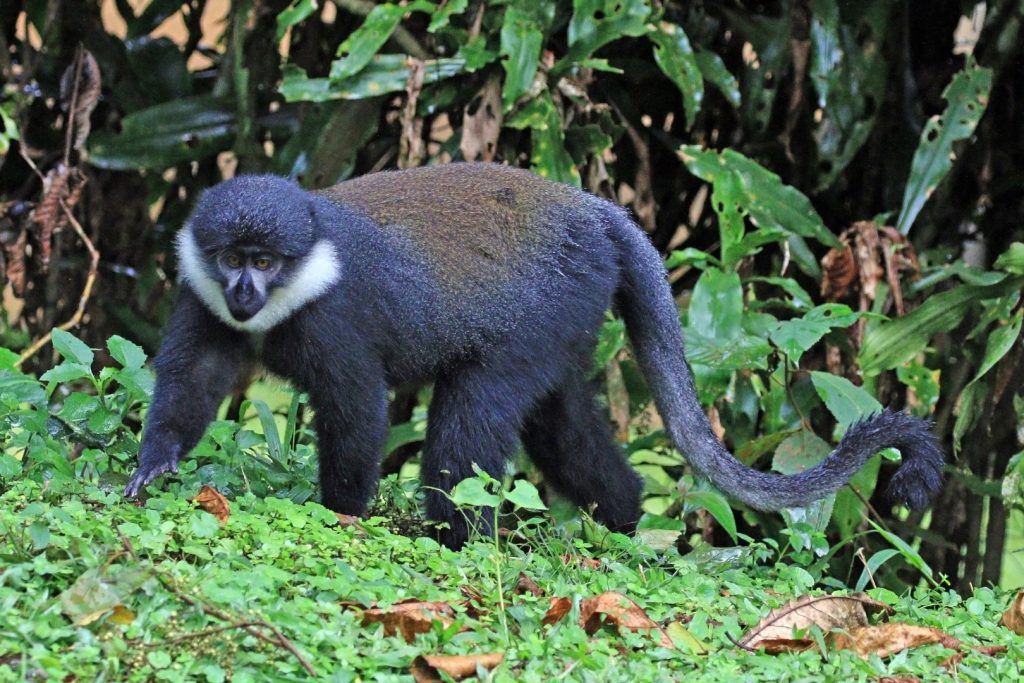
The L’Hoest’s monkey (Cercopithecus lhoesti) or mountain monkey, is a guenon forest specie always sighted playing around the Kanyanchu visitor’s center. They have a dark coat and can be distinguished by a characteristic white beard, short, dark brown coat, with a chestnut color across the back and a dark belly. Its tail is long and hook-shaped at the end and they are born fully coated and with their eyes open.
Thomas Galago
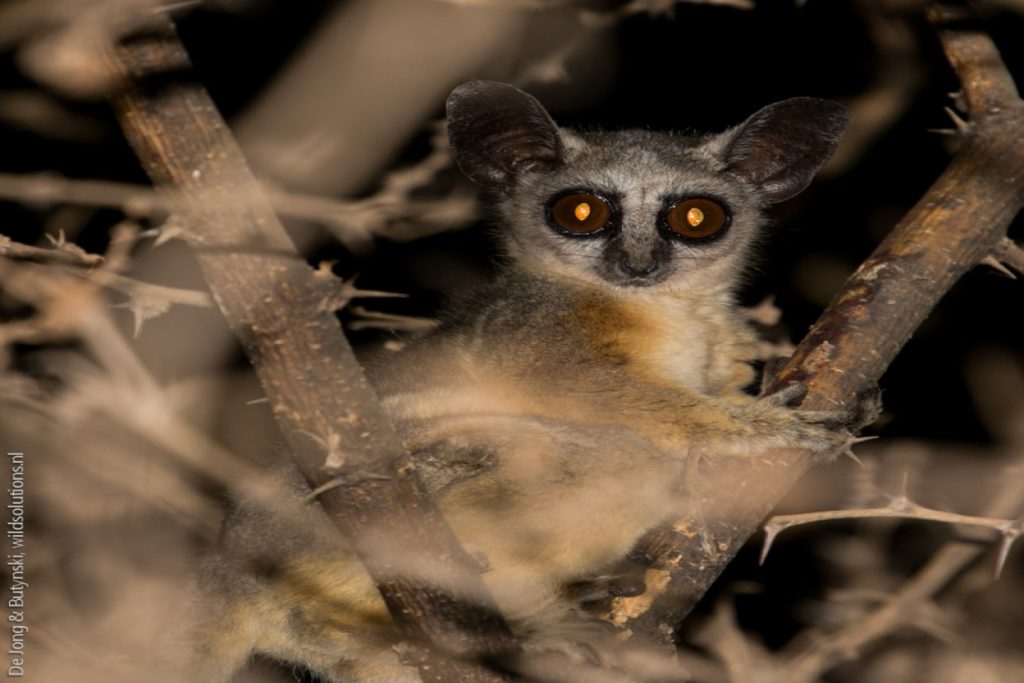
Commonly known as ‘bush baby’, Thomas Galago is one of the common nocturnal primates species in Kibale National Park during night walk. They feed of fresh shoots, fruits, insects and small birds. Bush babies have longer hinge legs than the front legs which helps them to jump and land to another tree branch with wide open oval eyes that give them sense of vision during night. They have ears like for cats, facing front wise.
Thomas Galago are gray, brown, or reddish to yellowish brown, with large eyes and ears, long hind legs, soft, woolly fur, and long tails. Bush babies are also characterized by the long upper portion of the feet (tarsus) and by the ability to fold their ears. This they extract by gouging holes in trees and scraping the bark, using their toothcombs where they do hide during day time.
Potto
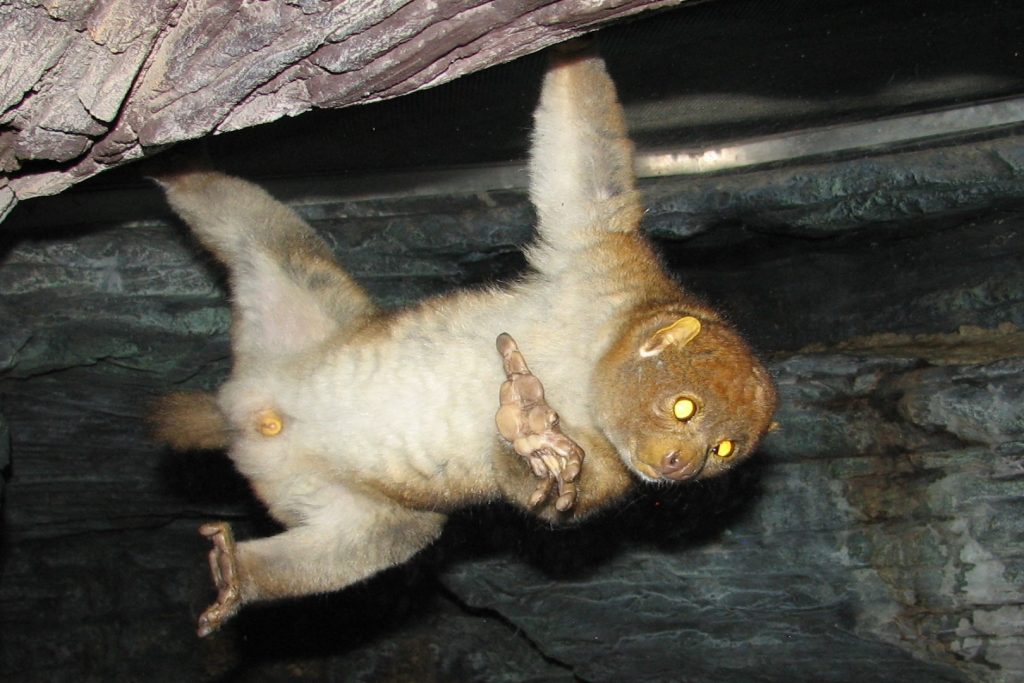
Just like bush babies, Pottos are also nocturnal animals always sighted at night, during night forest walk in Kibale forest. Their close, woolly fur is grey-brown. The index finger is vestigial, although it has opposable thumbs with which it grasps branches firmly.
Like other strepsirrhines, the potto has a moist nose, toothcomb, and a toilet claw on the second toe of the hind legs. In the hands and feet, fingers three and four are connected to each other by a slight skin fold, while toes three through five are joined at their bases by a skin web that extends to near the proximal third of the toes.
The potto moves slowly and carefully, always gripping a branch with at least two limbs, to avoid pretenders.
Olive Baboon
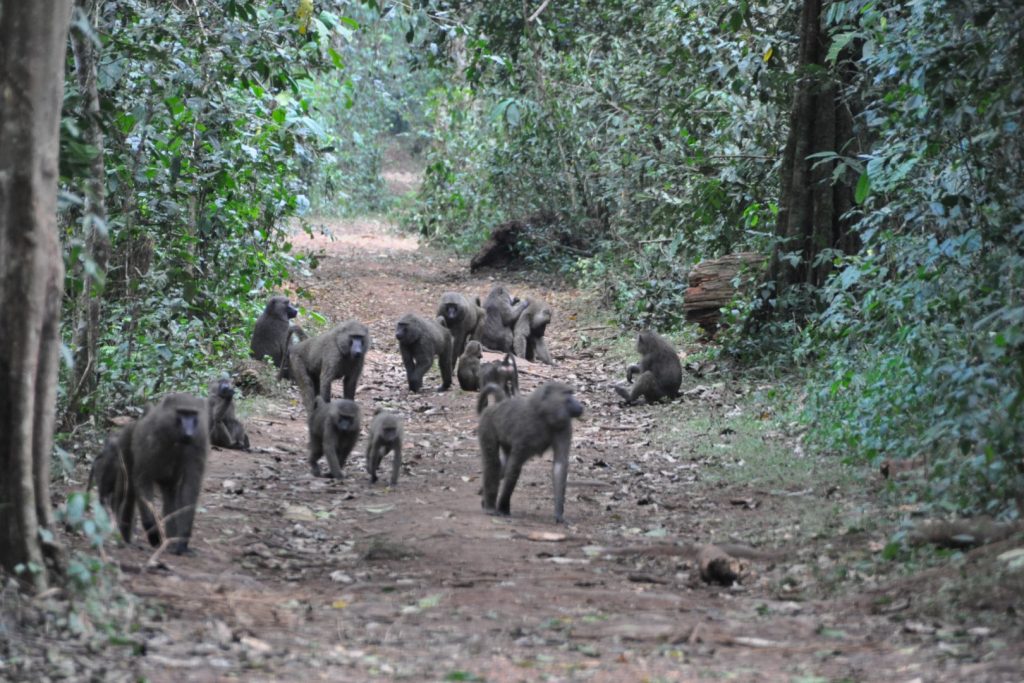
Baboons are one off the starbon primate species in Kibale that can be sighted at Kanyanchu or along the road while driving through Kibale National Park. They are very social and can leave up to a troop of 150 individuals. Baboons are omnivorous and are always sighted near trading centers and village homes, looking for left overs to feast on. Baboons can snatch away your food in case you keep an eye away from them.
Young baboons are always in groups and playing together. The newly born babies which are always black in look with pink face, are always around the back of their mothers. Baboons live in hierarchy, a dominant male always leading the group. In Uganda, baboons can also be found in Budongo forest.
African Civet Cat
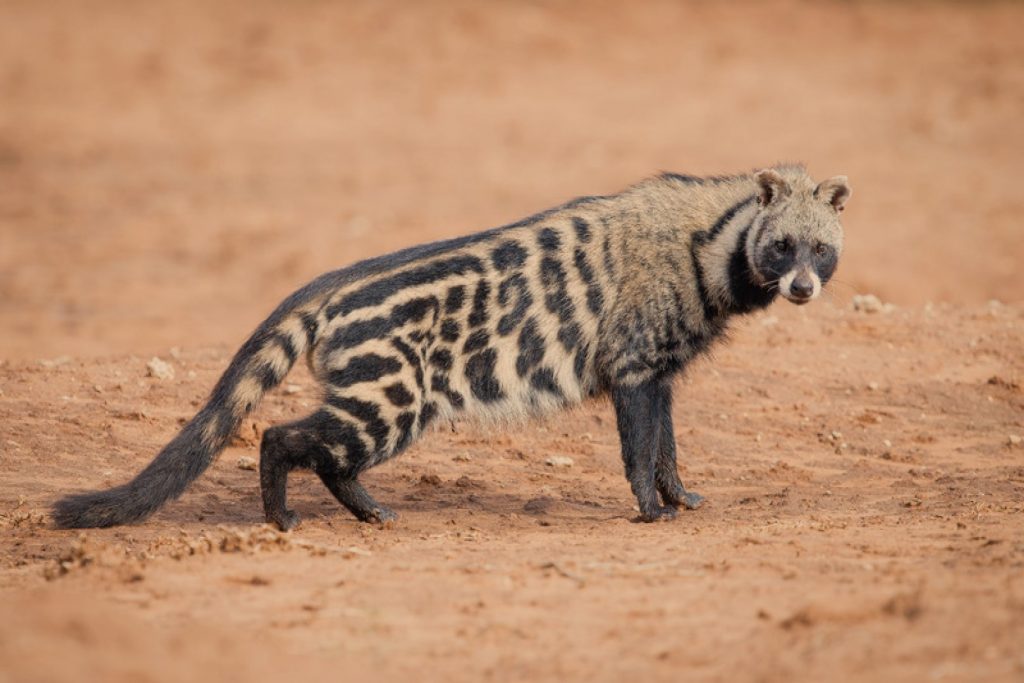
African civet cat is one of the nocturnal cats that can be sighted within the forest of Kibale National Park, during a night nature walk. They are normally detected by their black and white coat and their grey face, along with the black band around their eyes, which gives these animals a Raccoon-like appearance. The similarity is only heightened by the fact that the African Civet’s hind legs are quite a bit longer than the front legs, making its stance very different to that of a Mongoose.
The African Civet is a solitary animal that only comes out under the cover of night to hunt and catch food. African Civets tend to be most active just after sunset but tend to hunt in areas that still provide plenty of cover.
African Elephant
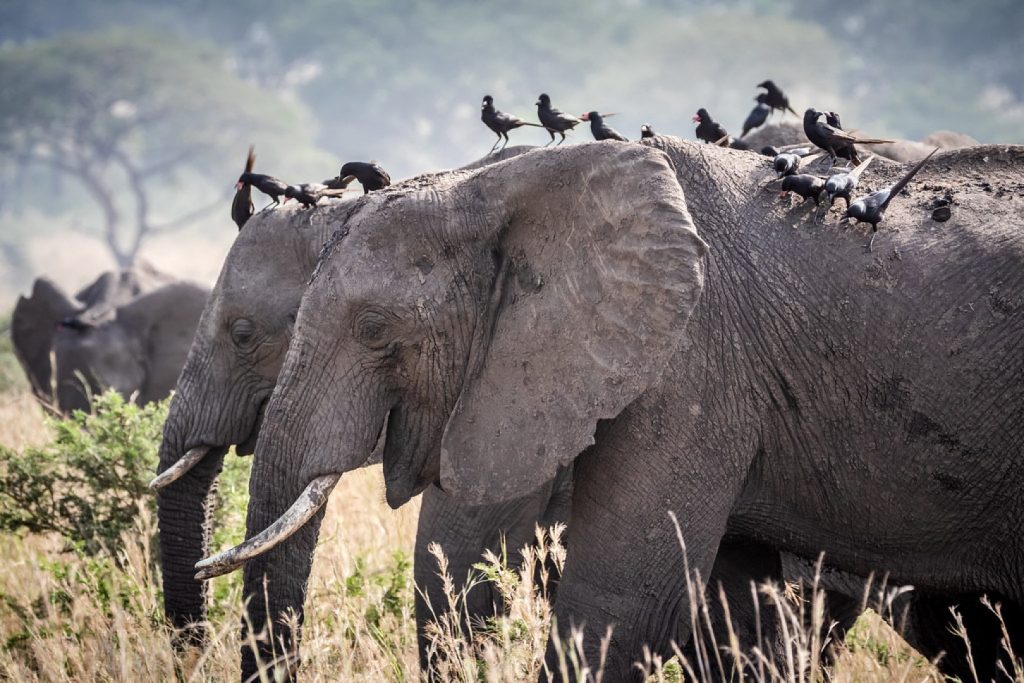
Two types of African elephants do exist; the savanna elephants and forest elephants. Kibale National Park boasts of having forest elephants since it is a forest park. It is the smallest of the three extant species of elephants, but still one of the largest living terrestrial animals.
Like other elephants, they do carry tusk and the female takes 22 month gestation period. During chimpanzee trekking, elephants are always seen within the swampy areas. Generally, these forest-dwelling elephants are smaller and darker than their savanna relatives, the bush elephants with much longer tusks and with trunk top lip and nose are elongated into a trunk that is distinctly more hairy than savanna elephants.
Forest Cape Buffaloes
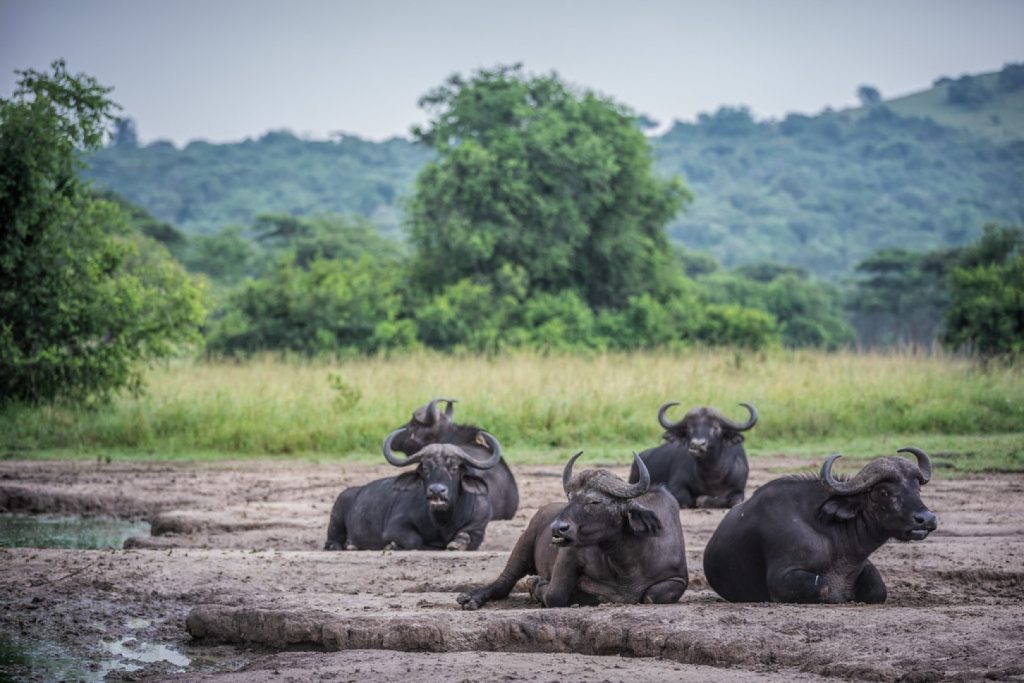
Seen several time during chimpanzee tracking in the forest and is the smallest subspecies of the African buffalo. Cape buffalo weigh anywhere from 400 to 800 kg whereas African forest buffalo are much lighter, weighing in at 250 to 320 kg with reddish brown hide that is darker in the facial area, have much smaller horns than their savanna counterparts, the Cape buffalo, with horns rarely fusing together.
